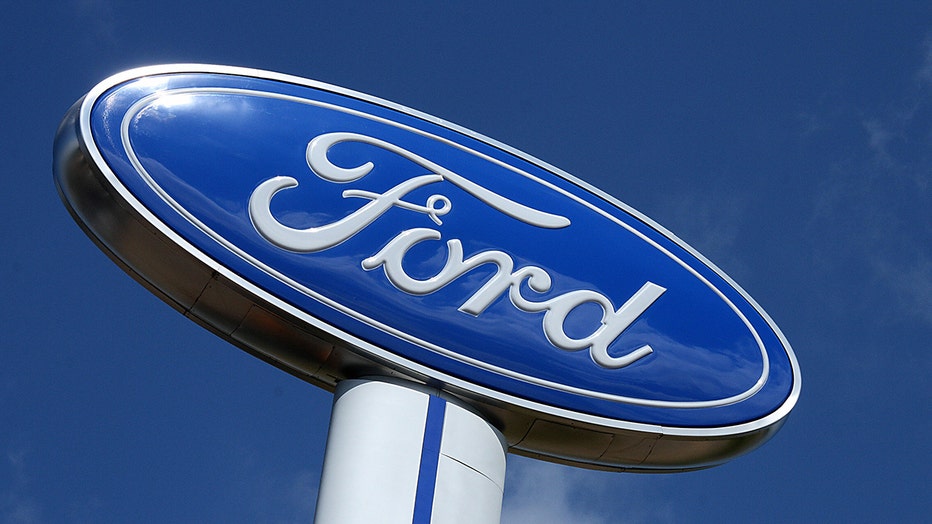Ford CEO announces changes, including non-negotiated vehicle prices

How car recalls get reported
The National Highway Traffic Safety Administration (NHTSA) officially start car recalls after receiving complaints from consumers.
DETROIT - Ford CEO Jim Farley says his company will stop competing in over-served market segments and instead will place big bets on connected vehicles and digital services.
The days of Ford being all things to all people are over, Farley said at the company's capital markets day event Monday.
The company, he said, has been "stuck in a box," with thin profit margins, weak growth and low stock valuation.
Ford, Farley said, will emphasize software and services as well as iconic vehicles such as pickup trucks, large SUVs, commercial vehicles and advanced second-generation electric vehicles. He said the company is eliminating waste to close a cost gap with the best in the industry with a "lean disciplined operating system" that reaches into all Ford factories.

The Ford Motor Company logo is seen July 20, 2008 at a dealership in Hudson, Wisconsin. AFP PHOTO/Karen BLEIER (Photo credit should read KAREN BLEIER/AFP via Getty Images)
Ford's F-Series pickups are the top-selling vehicles in the U.S. and a huge profit center.
Farley said by focusing on software, services and Ford's strengths in products, the company won't be as vulnerable to a downturn as in the past. He said the company has let complexity "overrun our business as we tried to be all things to all people."
Farley says Ford will be competing differently, going for tailored ownership experiences rather than "jockeying for slivers of market share" with complex vehicles in competitive segments such as two-row crossover SUVs. He said Ford will go to non-negotiated vehicle prices.
RELATED: Ford recalled 310,000 trucks over air bag issue
Ford has said it will get to a 10% pretax profit margin in 2026. It reiterated 2023 full-year guidance of $9 billion to $11 billion in adjusted pretax profits. Farley said the company has even greater margin ambitions.
To get there, Ford says it will cut costs by reducing the number of parts in its vehicles, as well as cutting warranty and recall expenses by boosting quality.
But Farley said he doesn't see reductions in the number of factory employees or among engineers and other office workers. The company predicted it would sell 5.6 million vehicles in 2026 as global sales recover, and it will need workers to design and produce them, Farley said. Ford sold roughly 4.2 billion vehicles last year.
Farley has long complained about Ford’s high retail and warranty costs, and Kumar Galhotra, president of Ford Blue, the company’s internal combustion unit, said the company is making changes to reduce those to improve profit margins.
Rather than testing the new Super Duty pickup to a particular standard, the company tested it until parts and systems failed, he said. Now Ford is finding the eventual weak point and eliminating it, prolonging vehicle life, Galhotra said.
Ford also is focusing on reducing the number of vehicle parts, and on the stability of parts supply companies, he said. For example, by the time Ford rolls out a new version of the F-150 pickup this year, it will have cut 2,400 parts from the existing model,
"We have some chronically inefficient tier one and tier two suppliers," Galhotra said. Some have caused an unstable flow of parts, he said, adding that Ford has worked with 125 key suppliers to stabilize their operations. "If the present supplier is not on a path to a permanent solution, we’re re-sourcing the business," he said.
A study by Plante Moran released Monday showed that Ford’s working relations with parts suppliers has declined dramatically since 2020.
Ford also said its new or revamped electric vehicle manufacturing plants will be far more efficient, with nearly 30% less labor overhead than the company's current large internal combustion vehicle plants. But Farley said that doesn't mean fewer factory workers because they'll be needed to make batteries and other EV parts.
Ford Motor Co. also said it cut deals with a number of companies to supply its rapidly growing electrical vehicle division, Ford Model e.
Ford will get more than 100,000 metric tons of lithium hydroxide from Albemarle, based in Charlotte, North Carolina. Compass Minerals International announced a multiyear deal to supply Ford with up to 40% of the battery-grade lithium carbonate coming from its project in Utah.
EnergySource Minerals will supply the carmaker with lithium hydroxide from a new site in Imperial Valley, California, and Nemaska Lithium, a Canadian miner, will supply Ford with 13,000 tons of lithium hydroxide annually for 11 years. per year over 11 years.
Because the materials are coming from the U.S. and Canada, it ensures that Ford's electric vehicles will qualify for new federal tax credits, making them more competitive.
Ford has split itself into three business units, Ford Blue, Ford Model e for electric vehicles and digital products, and Ford Pro, the company's commercial vehicle business.
"I’m not here to tell you that we’re under valued," Farley said Monday. "You make your own decision."
Shares of Ford fell 1.2% Monday.

